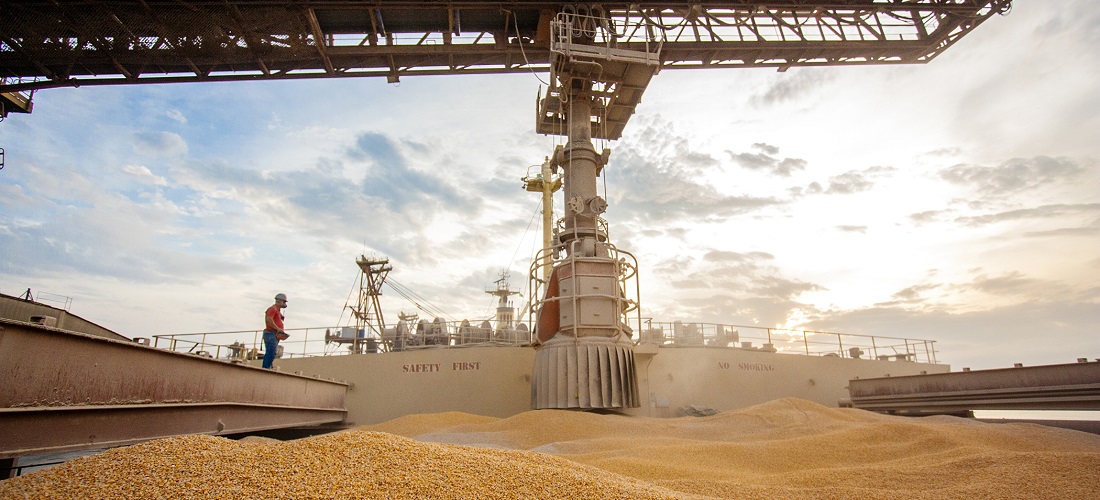
Corn exports via Port of Paranaguá grows 503%
Dec, 10, 2019 Posted by Sylvia SchandertWeek 201951
The year is not even over yet and the volume of corn exported by the Port of Paranaguá already exceeds the records of the last five years. In 2019, from January to November, exports have gone over 5.49m tons of grain. That represents more than six times the corn shipped last year (about 911,300 tons), at an increase of 503%.
“This is the largest volume of corn ever exported by the Ports of Paraná. If we take the statistics of the last five years, the movement of the product, the average is around three million tons,” says the president of the Public Company Portos do Paraná, Luiz Fernando Garcia.
According to him, the performance in crops in Brazil and in countries such as the United States (also a commodity exporter), crop yields, prices, dollar value, and market demand influence the movement of terminals in Paraná. However, the rules, management, and commitment of the port authority to work closely with operators and customers also contribute to this performance.
“Our rules are clear, transparent and well defined. The management of the systems that help us organize this movement from the arrival of trucks and wagons, the unloading at the terminals to the ship’s embarkation also ensures agility and efficiency. Higher productivity is the result of this work,” points out Garcia.
The systems referred to by the president are AppaWeb – specifically the Line-up module, which assists in the scheduling of ships – and Cargo Online, which assists in the logistics of receiving cargo. The systems work in an integrated manner.
“We only call the truck or wagon to unload the grain and bran for export once a ship is already scheduled and released to receive the cargo. The cycle is orderly. In addition to avoiding the lines, it ensures the turnover and quality of the products shipped, as they do not spend too much time in stock,” he explains.
Corn exports by Port of Paranaguá from January to November this year reached the terminals in 90,827 trucks and 31,797 wagons in the proportion of 63.4% by road and 36.6% by rail. About 90% of maize unloaded in the Port of Paraná comes from the state. The rest comes from Mato Grosso do Sul, Goiás, Mato Grosso, São Paulo, and Espírito Santo.
Maringá, in the north of the state, is the main city of origin of the grain in Paraná. The corn that came from there arrived mainly by wagon. More than 1.19m tons arrived by rail in 20,059 wagons. There were just over 176,500 tons by highways in 4,840 trucks.
In the Port of Paranaguá, maize was exported by five berths: in addition to the three on the Export Corridor (berths 212, 213, and 214), corn also filled the hold of ships in berths west of the quay: 201 and 204.
More than 92% of the volume of corn exported by Paranaguá from January to November came from the Export Corridor.
In total Solid Bulk Exports, there were more than 20.8m tons of products exported by the Ports of Paraná from January to November 2019. The volume is 1% higher than the 20.55m tons exported in 2018, in the same period.
In addition to corn exports in Port of Paranaguá, this segment includes soybean (10.5m tons exported in 2019), soybean meal (4.79m tons), and a small volume of wheat (16,000 tons).
Added to the volume of soybean meal exported by the Ports of Paraná, are the almost 42,900 tons of non-GM soybean meal exported by the Port of Antonina.
The volume of sugar exported in bulk by the Port of Paranaguá is not added to this total. More than 2.43m tons of the product were exported from January to November in 2019.
Volume of corn exported in the last 5 years
2019 (until November) – 5.49m
2018 – 1.1m
2017 – 3.5m
2016 – 2.5m
2015 – 4.1m
2014 – 4.2m
-
Ports and Terminals
Aug, 08, 2023
0
Itaqui Port gears up new decarbonization plan and smart port strategy
-
Meat
Jul, 30, 2024
0
Brazil July Poultry Exports Near Last Year’s Levels, Gov’t Reports
-
Shipping
Sep, 03, 2021
0
Asian dry bulk owners take the lead in accepting containers on deck
-
Shipping
May, 19, 2021
0
How the Covid-19 crisis in India affects global shipping



